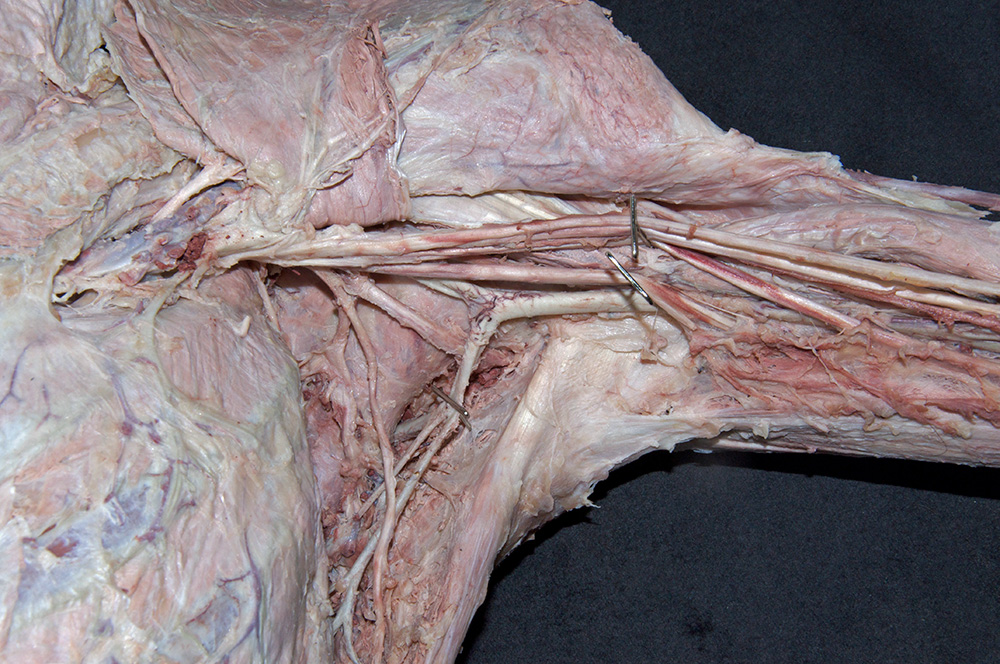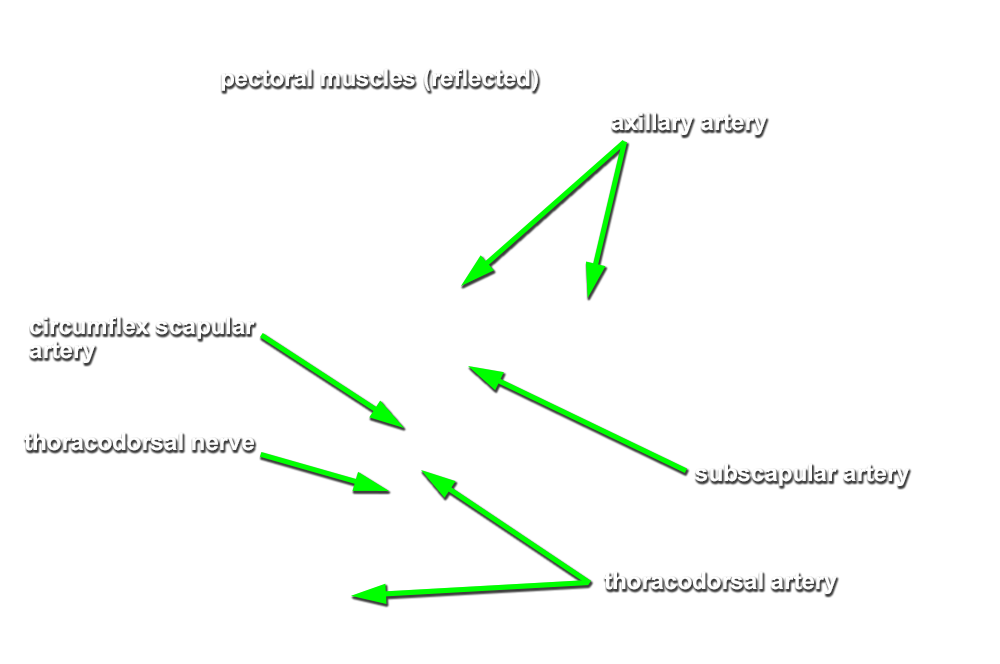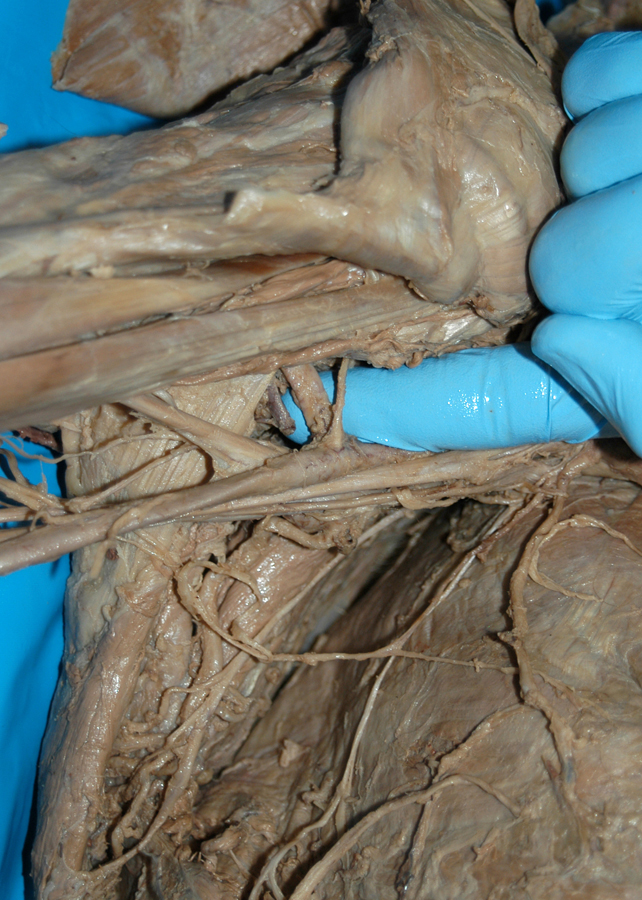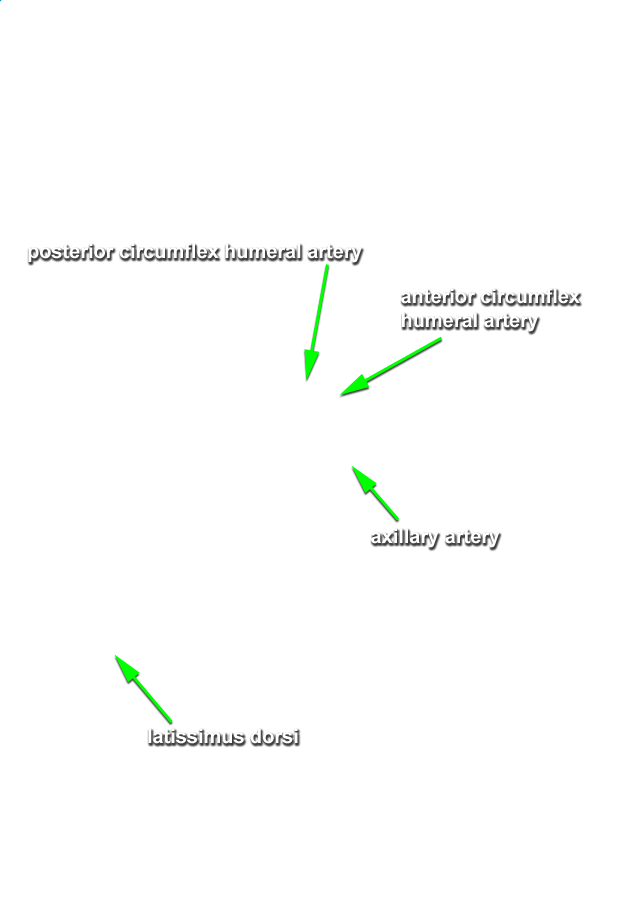Return to the axilla and identify and clean the remaining branches of the axillary artery and the brachial plexus. Observe that most of the branches are oriented along an axis passing from the apex of the axilla (proximal) towards the anterior-medial aspect of the arm (distal). You will need to clean the branches by blunt dissecting along this axis. (G 6.25A;N 417;Gl 24.34)
- Return to the axillary artery. Clean this artery by removing the axillary sheath and all venous branches that obstruct the dissection field.
- Identify and clean the subscapular artery. (G 6.25A;N 422;Gl 24.34B) Trace its two major branches, the circumflex scapular artrey (dives deep to reach the posterior aspect of the scapula) and the thoracodorsal artery (descends to reach the latissimus dorsi muscle; clean and trace the latissimus dorsi muscle to its distal attachment on the medial lip of the bicepital groove).
- Identify and clean the anterior and posterior circumflex humeral arteries. (G 6.25A;N 422;Gl 24.1) The anterior circumflex humeral artery is typically the smaller of the two arteries. The posterior circumflex humeral artery occasionally arises from the subscapular artery. Remember, we name the arteries for the structures they supply (where they go) even if they do not follow the typical branching pattern illustrated in the atlas. (G 6.2;Gl 24.1)
- Stop tracing the axillary artery at the level of the humeral attachment of the latissimus dorsi muscle.
Important Relationships
- The axillary artery passes posterior (deep) to the pectoralis minor muscle.
- The anterior circumflex humeral artery passes directly anterior to the humerus (surgical neck).
- The posterior circumflex humeral artery passes directly medial and posterior to the humerus (surgical neck).





